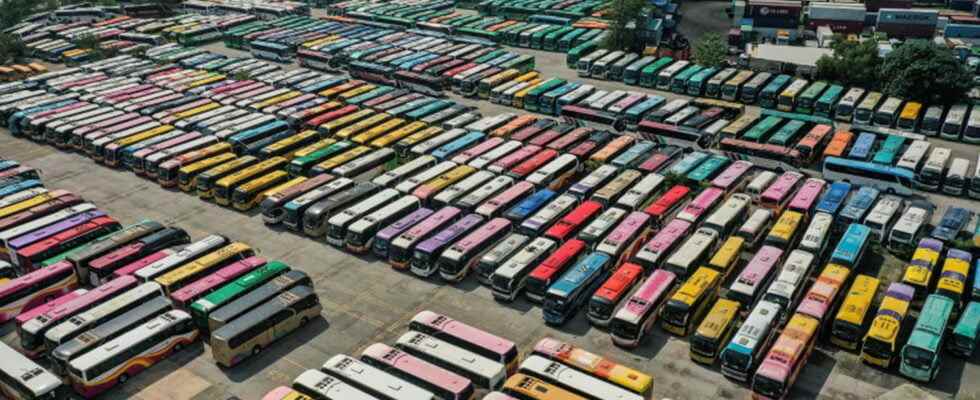Record growth for a decade but economy under pressure: if China announced on Monday a GDP up 8.1% in 2021, the Covid-19 is still weighing on the recovery of the Asian giant.
The country has largely recovered from the initial shock of the pandemic, but sporadic outbreaks continue to disrupt activity.
The “zero Covid” policy, which consists of doing everything to limit the occurrence of new cases as much as possible, made it possible to quickly stem the epidemic in 2020.
But it comes with a high social and economic cost. The service sector (leisure, tourism, hotel and catering, transport, etc.) has thus still not returned to its pre-pandemic level.
The recovery is also weakened by a surge in the price of raw materials and a crisis in real estate with the setbacks of the promoter Evergrande, on the verge of bankruptcy.
The Chinese economy is facing “triple pressure”, Ning Jizhe, an official with the National Bureau of Statistics (NBS), admitted to the press on Monday, referring to a contraction in demand, tensions in supply chains and lowered economic objectives.
In this context, China nevertheless posted growth of 8.1% last year. This is its fastest pace since 2012. Beijing had set itself the target of 6% growth for 2021.
A group of analysts polled by AFP expected an average increase of 8% in gross domestic product (GDP) for 2021.
-Omicron-
In the fourth quarter, the growth of the Asian giant however lost steam (+4% year on year), after 4.9% in the previous one.
In the first quarter, GDP still stood at 18.3%. A high rate linked to the weak basis of comparison with the beginning of 2020 when the epidemic paralyzed activity.
From one quarter to another, GDP rose by 1.6%.
Although subject to caution, the official growth figure is still scrutinized, given the weight of China in the global economy. The country thus appears as a barometer of recovery.
In 2020, China was one of the few economies to post positive growth (+2.3%), when the Covid-19 struck down the rest of the world – this rate, however, was the weakest in four decades.
Retail sales, the main consumption indicator, posted their worst performance in December (+1.7%) since the summer of 2020.
Industrial production, on the other hand, was stronger than expected last month, at +4.3% over one year.
After the appearance of several cases of Covid, three Chinese cities – some 20 million inhabitants – have been placed in quarantine in recent weeks. The highly contagious Omicron variant is singled out for a handful of cases.
“This will considerably penalize the service sector, in particular consumption and transport,” warns analyst Yue Su, of the firm Economist Intelligence Unit (EIU).
Especially since the authorities are particularly on the alert as the Beijing Olympics approach (February 4 to 20) and the major Lunar New Year trips (February 1).
– Birth rate at half mast –
The pressure of draconian health measures is such on the economy that the Chinese power will have to “reconsider its zero Covid policy”, suspects Yue Su.
In a sign of the difficulties the Chinese economy is going through, the central bank lowered a key interest rate on Monday for the first time since April 2020.
The measure aims to ease the pressure on small and medium-sized financial institutions to encourage them to grant more credit, on more favorable terms, to companies.
On the employment front, the unemployment rate, measured in China only in urban areas, stood at 5.1% in December (against 5% a month earlier).
Particularly watched by the authorities, this figure excludes from its calculation the millions of migrant workers, weakened by the pandemic. The unemployment rate had reached an all-time high of 6.2% of the urban working population in February 2020.
As for investment in fixed assets, its growth slowed sharply in December, to 4.9%, according to the SNB.
The birth rate in China also fell last year to a historically low level, since at least 1978, according to official data, against a backdrop of uncertainty about the future and the cost of education.
The birth rate for the world’s most populous country was 7.52 births per 1,000 people in 2021. That rate was 8.52 a year earlier.
This is the most “troublesome” figure released on Monday, according to economist Zhiwei Zhang at Pinpoint Asset Management. Because “it shows that China’s growth potential is (also) probably slowing faster than expected”.
All rights of reproduction and representation reserved. © (2022) Agence France-Presse





